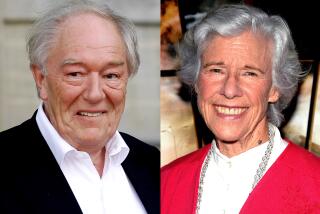Charles Dickens, man of the theater
NEW YORK — A case of the sniffles prevented Charles Dickens from auditioning to become an actor, but it didn’t steal his love of the stage.
After a cold caused the aspiring young thespian to forgo the tryout at London’s Covent Garden Theatre, he took a job as a newspaper reporter and editor. Within three years, he became a celebrated novelist with publication of “The Pickwick Papers” at age 24. “A Christmas Carol” was published seven years later, in 1843.
The exhibit “Best of Times: The Theater of Charles Dickens” at the New York Public Library for the Performing Arts, focuses on Dickens’ association with theater, not on the acclaim he won as an author.
Among 200 items on display are rare 19th century broadsides, posters and programs from plays in which he was involved as an actor, playwright, director, librettist or other capacity.
His own stage performances were in amateur productions, usually for charity. Still, his work won some raves; one reviewer described Dickens’ performance as Captain Bobadill in Ben Johnson’s “Every Man in His Humour” as “the very height of fun.”
“He was passionate about the theater all of his life,” said the exhibit’s curator, Bob Taylor. “Anybody who has read or studied his novels ... can’t come away without recognizing the theatricality of them.”
But in spite of numerous attempts, success as a playwright eluded Dickens.
“I think he really needed the very broad canvas of a novel. He needed to develop his characters, and he always had intricate plots,” Taylor said. “I don’t think he could compact it into two or three hours on stage. It’s so ironic that he loved the theater so much and was such a great writer but couldn’t get it together to write a good play.”
Despite Dickens’ struggle, other writers found his novels perfect for dramatic adaptation. In fact, plays based on Dickens’ novels often showed up on stage before the final chapters appeared in the serialized form popular at the time.
Dickens was upset that these playwrights invented endings and characters -- an anger compounded by the fact that he got no money from the productions, Taylor said.
Oversized, colorful posters in the New York exhibit advertise or illustrate scenes from 19th century stage versions of “Bleak House,” “Oliver Twist” and other novels.
Twentieth century productions are represented with photographs, programs, posters, advertising and videotaped scenes from plays.
Designed to look like a Victorian drawing room -- complete with a crackling, though fake, fire -- the exhibit features Dickens’ own prompt books with notes in his handwriting.
These were used for Dickens’ celebrated public readings in the last decade of his life, when he toured the United States and United Kingdom, reading and acting out scenes from his works.
“He was a consummate performer,” and the dramatic efforts often left him drained, Taylor said.
An entire wall is devoted to the countless incarnations around the world of “A Christmas Carol,” including a 1979 production called “Comin’ Uptown” that put an urban slant on the tale and starred Gregory Hines.
The story that made Ebenezer Scrooge a 19th century metaphor for cold-hearted greed and introduced “Bah, humbug” to the lexicon is the only one of Dickens’ works that has become more popular on stage -- and eventually in television and film -- than it was during Dickens’ lifetime.
The exhibit in the library at Lincoln Center continues through Feb. 15.
More to Read
The biggest entertainment stories
Get our big stories about Hollywood, film, television, music, arts, culture and more right in your inbox as soon as they publish.
You may occasionally receive promotional content from the Los Angeles Times.










